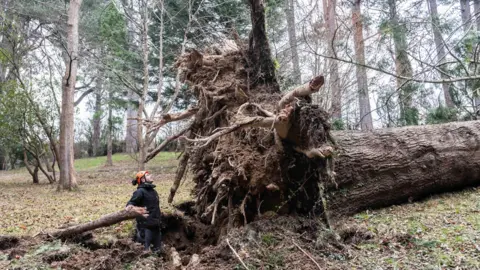 National Trust Images, Paul Harris
National Trust Images, Paul HarrisStorms and flooding have damaged some of the UK’s most precious heritage, according to the National Trust – the UK’s biggest conservation charity.
It says extreme weather is taking a toll on the estates it manages in England and Wales, with many mature trees brought down and flooding damaging buildings and gardens.
Warm, wet conditions have prevailed this year and that has brought problems too, the Trust says in its annual roundup of how the weather and climate has affected its vast holdings of land and property.
It says increasing “homogenisation” is blurring distinctions between the seasons, which can be challenging for many insect species and the predators that depend on them.
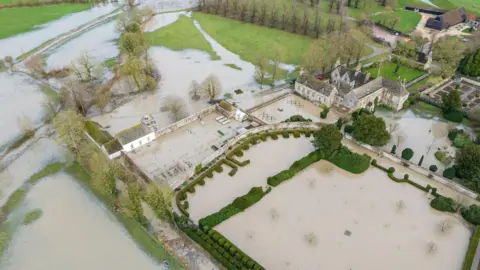 National Trust Images
National Trust Imagesin January, Avebury Manor, a Tudor manor house in Wiltshire, flooded for the first time in 300 years, after a series of named storms barrelled into the country. It was one of a number of properties that suffered as Storm Henk was followed by Storms Isha and Jocelyn.
Many of the Trust’s properties aren’t designed to endure the extreme winds and rain storms like this bring. Some buildings still have antique drainpipes and guttering – often an important design feature – which can overflow in heavy rain, sometimes damaging interiors as well as exteriors.
Later-blooming bluebells
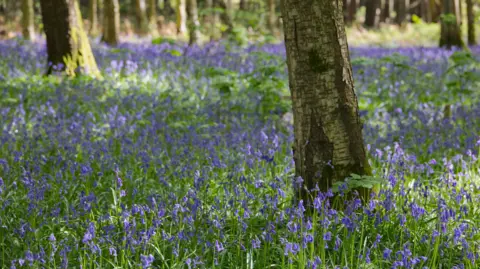 National Trust Images, Laurence Perry
National Trust Images, Laurence PerryApril was cool and wet which meant many flowering plants, including bluebells, flowered later than usual – like these fine examples at Walk Wood in Sheffield Park and Garden in East Sussex.
Many domestic gardens will also have seen plants bloom a little late, but once they got going most should have performed well, helped by the plentiful moisture which kept many plants strong.
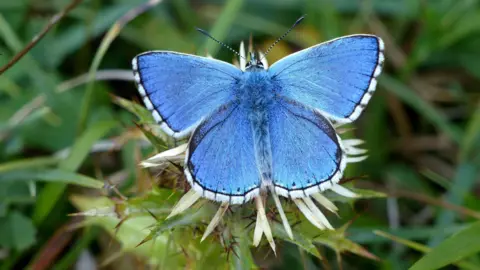 National Trust Images, Matthew Oates
National Trust Images, Matthew OatesThe erratic spring weather disrupted some wildlife species including the rare Adonis blue butterfly. Charity The Butterfly Trust says only 333 examples of this dramatic creature were recorded in one area of west Dorset – a stronghold of the species – compared to 1,459 in 2023.
Many bee, wasp and moth species also recorded very low numbers.
“Our unpredictable weather is resulting in confusion for our wildlife and the slow loss of what once were ‘predictable’ seasons,” said Keith Jones, the Climate Change Advisor at the National Trust.
 National Trust Images, Ross Hoddinott
National Trust Images, Ross HoddinottThe rainy weather helped re-wet peatland ecosystems across the country after two years of very dry weather in 2022 and into 2023. Rare dragonflies were sighted on various bogland ecosystems, including this female Scare Chaser dragonfly at Wicken Fen in Cambridgeshire.
Many trees benefited too. Young saplings need moisture to build strong root systems, and the wet weather also relieved stress in some older trees which had been suffering during the parched weather.
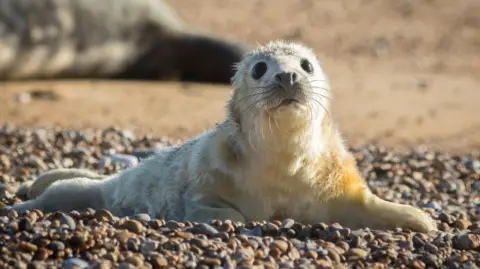 National Trust Images, John Miller
National Trust Images, John MillerThere was another good news story on the Suffolk coast. Rangers at the Orford Ness National Nature Reserve announced the establishment of the county’s first grey seal colony. The seals are believed to have set up home on the secluded beach at Orford Ness because of the low risk of disturbance, and also because thriving colonies up the coast at Blakeney and Horsey Gap have become crowded.
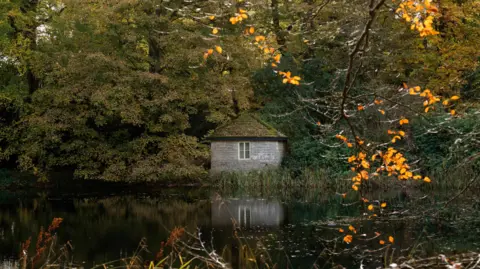 National Trust images, Rebecca Hughes
National Trust images, Rebecca HughesContinued warm weather meant autumn came late this year, but it brought an explosion of colour with some spectacular displays ranging from gold through to russet red, like here on the Wallington Estate in Northumberland.
The lack of frost and wet soils meant many trees kept their leaves well into November, a month longer than usual. But autumn displays were brought to an abrupt end in the second half of the month when a cold snap followed by Storm Bert stripped trees of leaves in just a couple of days.
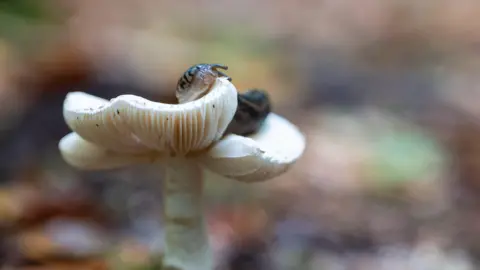 National Trust Images, Rob Coleman
National Trust Images, Rob ColemanThe mild and wet autumn was great for many species of fungi. Gardeners will have noticed that other moisture-loving creatures – including slugs and snails – thrived too. In the picture above, a leopard slug is eating a false deathcap mushroom on the Blickling Estate in Norfolk.
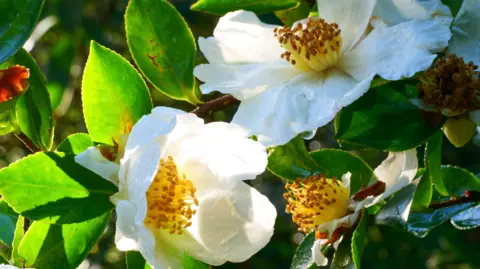 National Trust Images, Hilary Daniel
National Trust Images, Hilary DanielThese last few weeks have seen yet more changeable weather with temperatures seesawing from freezing to balmy in a matter of days. These camelias burst into bloom on 20 November at Glendurgan Garden in Cornwall.



